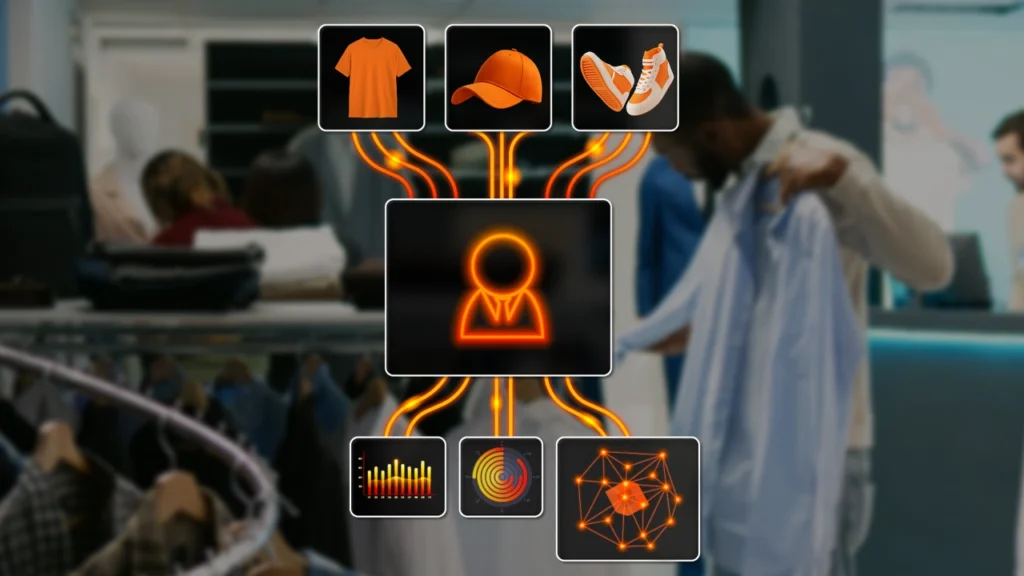How Customer Analytics Is the Key Enabler of Supply Chain Success

Customer analytics has now become a front-line differentiator for customer experience, making supply leaders focus on what their customer wants, when, and how.
What is Customer Analytics?
Simply put, customer analytics is the process of collecting and processing customer data to identify customer behavior and their interaction with your products. As of today, businesses can now use customer analytics to decode undiscovered patterns, shape customer journeys, and make every interaction count.
In this blog, we cover a practical approach to customer analytics and how it’s playing a crucial role in supply chain management.
Why Customer Analytics?
Beyond a textbook definition, what customer analytics do for enterprises is to
- Know why your best customers keep coming back.
- Spot early signs of churn before it's too late.
- Predict what your customers want before they even ask.
- Build hyper-personalized journeys for every customer segment.
- Align supply chain, marketing, and product with what people want.
In a conversation on customer journey analytics Syren's Chief Commercial & Growth Officer insists, "If you want to grow sustainably, start with the customer. Customer analytics is the only way to make that journey measurable, meaningful, and scalable.”
Adding to it, he also says, “Customer analytics is about understanding your customers, what they are saying, without them having to say a word!”
Understanding How Customer Analytics Works
Customer analytics is a key component of customer experience; it can transform an enterprise’s marketing campaigns into real business decisions taken to drive growth and customer satisfaction.
Identification, collection, organization, analysis, and action are the key steps that contribute to customer analytics.
Identification
Identifying relevant customer data needed to understand customer journey and perform customer data analytics, for example, geography, feedback, customer care, transaction patterns, etc.
Collection
Capturing relevant data from signup forms, surveys, social media, website exploration, and more.
Organization
Streamlining and organizing the data with the help of customer data platforms, data lakes, or CRMs to eliminate silos across cross-functional teams.
Analysis
Analyzing the customer data using different analytical techniques like descriptive, predictive, and prescriptive analytics to determine what happened, what is likely to happen and what is the next best action.
Action
Turning insights into strategy. Adjusting fulfillment routes, personalizing offers, reallocating inventory, and triggering retention campaigns, all based on customer behavior.
Types of Customer Analytics
Descriptive Analytics
Descriptive analytics focuses on summarizing historical data to understand what has happened.
For example, e-commerce platforms use descriptive analytics to track website traffic and conversion rates over specific periods.
Predictive Analytics
Predictive analytics uses statistical models and historical data to predict what is likely to happen.
For example, logistics companies predict shipment delays or demand surges during peak seasons.
Prescriptive Analytics
Prescriptive analytics provides actionable recommendations based on data analysis, it provides the right answer to what should be done.
For example, Salesforce integrates prescriptive capabilities to suggest optimal next steps for sales representatives, such as bundling products or personalizing outreach campaigns.
Diagnostic Analytics
Diagnostic analytics delves into understanding why specific events occurred. By understanding why it happened enterprises can refine processes and improve outcomes.
For example, Sephora uses diagnostic analytics to identify why mobile users drop off during checkout by analyzing session replays and heatmaps, leading to UX improvements and increased conversions.
Enterprises Using Customer Analytics in Supply Chain
- Amazon uses predictive analysis methods to optimize their last-mile delivery and get the customer their desired product within 24 hrs.
- Zara uses near real-time customer feedback to modify their production cycles and reduce inventory waste.
- Walmart uses advanced analytics to plan assortments by region in turn improving in-stock rates and reducing overstock.
- Spotify uses customer analytics to create personalized playlists for customers based on their song preferences driving user satisfaction and customer retention.
- Procter & Gamble (P&G) uses customer data to collaborate with suppliers ensure raw material availability during peak season and reduce lead time.
Benefits of Customer Analytics
Companies that utilize customer analytics are 23x more likely to outperform competitors in customer acquisition and 9x more likely to surpass them in customer loyalty.
- McKinsey & Company
Identifying Churns Risks Before It Occurs
With the help of customer analytics enterprises are now able to examine patterns of declining engagement, reduced sales, or negative feedback. With a proactive approach, retention strategies can be modified like rolling out exclusive offers or better customer support.
Improved Personalization for Better Customer Engagement
Customer analytics enables enterprises to provide highly personalized experiences by examining personal preferences, buying behaviors, and search patterns. Enterprises can leverage this information to design customized product suggestions, targeted communications, and context-specific experiences that resonate with their customers.
Optimized Marketing Campaigns and Budget Allocation
Customer analytics enables organizations to effectively segment audiences so that marketing campaigns are both engaging and effective. By focusing on what channels and messages generate the most conversions, companies can better optimize resources and budgets.
Data-Driven Decision-Making Across Departments
Establishing data as a single source of truth and a unified view of customer behavior enables different departments to eliminate silos and leverage actionable insights from customer analytics.
Better Product Development and Innovation
With customer analytics, companies also get insight into unmet needs, customer pain points, and new trends. This allows for the design and development of products that meet market requirements.
Conclusion
In the uncertainty of market operations, geopolitical instability, and changing tariffs, one thing remains a top priority, customer satisfaction. The end consumer demands the right actions from its suppliers and to achieve that, customer analytics is the key.
According to Gartner, 61% of supply chain leaders believe customer-centric data analytics will be one of the top three enablers of competitive advantage by 2026.
Therefore, by turning insights into action, enterprises can better anticipate demand, reduce churn, and craft personalized experiences that customer wants and remember.
At Syren, we have helped several Fortune 500 companies increase their customer retention, boost revenue growth, and improve ROI. We can help you too! Let’s Talk!


